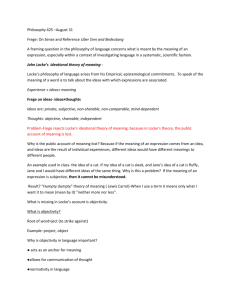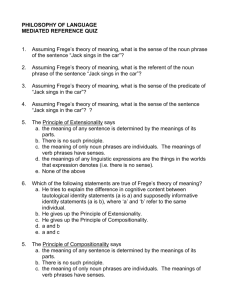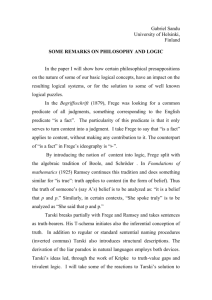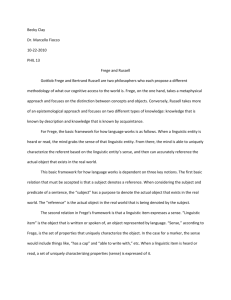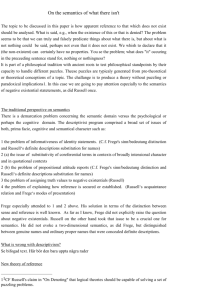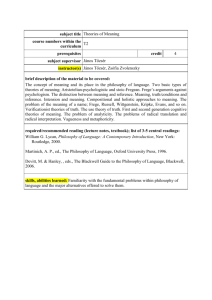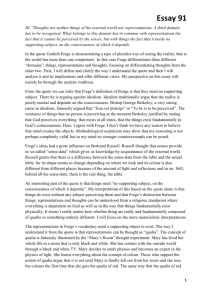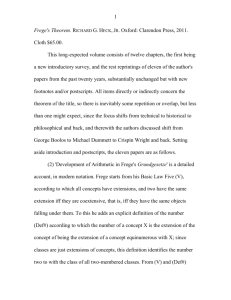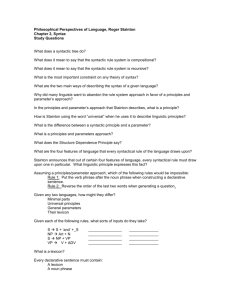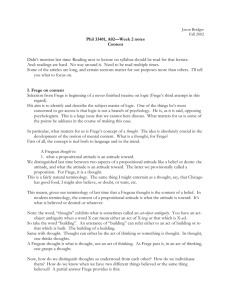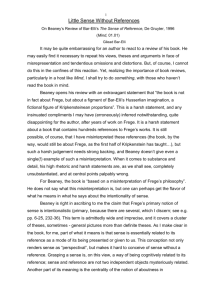Stainton, Chapter 4
advertisement
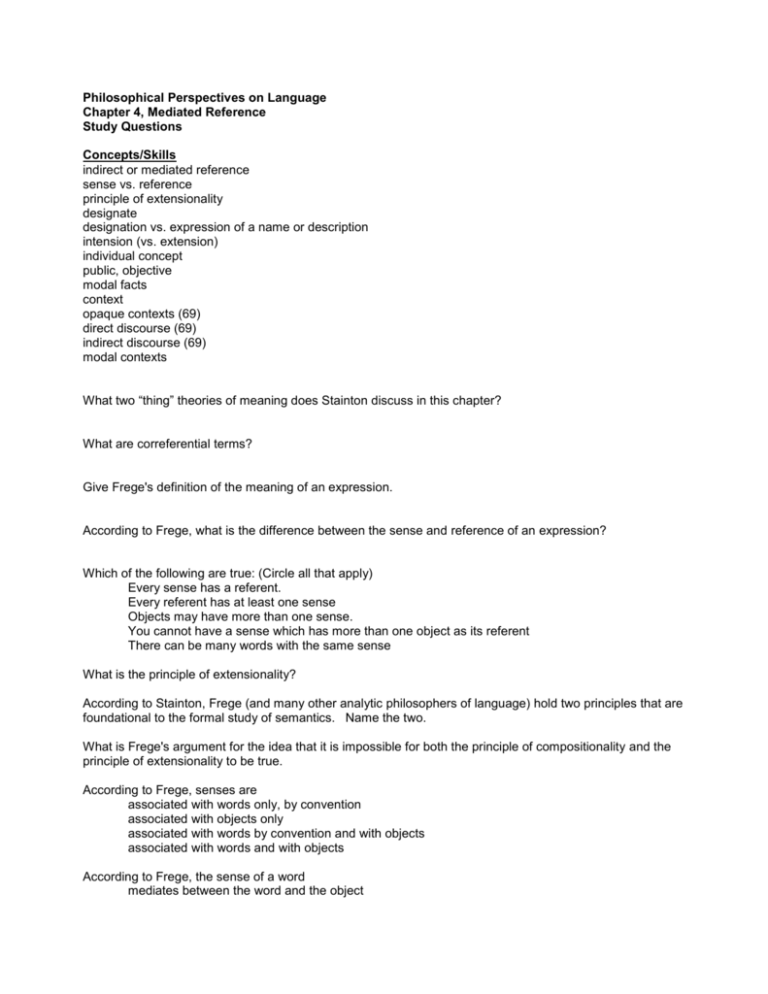
Philosophical Perspectives on Language Chapter 4, Mediated Reference Study Questions Concepts/Skills indirect or mediated reference sense vs. reference principle of extensionality designate designation vs. expression of a name or description intension (vs. extension) individual concept public, objective modal facts context opaque contexts (69) direct discourse (69) indirect discourse (69) modal contexts What two “thing” theories of meaning does Stainton discuss in this chapter? What are correferential terms? Give Frege's definition of the meaning of an expression. According to Frege, what is the difference between the sense and reference of an expression? Which of the following are true: (Circle all that apply) Every sense has a referent. Every referent has at least one sense Objects may have more than one sense. You cannot have a sense which has more than one object as its referent There can be many words with the same sense What is the principle of extensionality? According to Stainton, Frege (and many other analytic philosophers of language) hold two principles that are foundational to the formal study of semantics. Name the two. What is Frege's argument for the idea that it is impossible for both the principle of compositionality and the principle of extensionality to be true. According to Frege, senses are associated with words only, by convention associated with objects only associated with words by convention and with objects associated with words and with objects According to Frege, the sense of a word mediates between the word and the object is the referent of a word is a psychological entity is an idea inside a person is a private entity determines the referent Stainton says that Frege finds a conflict between accepting the principle of compositionality and the principle of extensionality and that Frege rejects the latter rather than the former, because "to give up compositionality is to forgo all previous progress: semantics would have to start from scratch." Why does Stainton think it would be so awful to reject the principle of compositionality? When does a word W refer to an object O? Compare Frege's notion of sense with the Cartesian notion of impressions. According to Frege, it is impossible for a term to refer to one thing but to express something different from another term which refers to the same thing. True or false? Direct reference had to say that the referent of a sentence is a proposition rather than a truth value. Why can Frege get away with saying that the referent or denotation of a sentence is a truth value? What is the main difference (if there are any differences) between Rusellian propositions and Fregean propositions? According to Frege, what is the sense of a predicate? A proper name? A sentence? What does Stainton mean when he asserts that the principle of compositionality needs to apply to both of Frege's levels of meaning? What problem does Stainton see for the principle of compositionality regarding the following two sentences? It is common knowledge that Mark Twain was an author It is common knowledge that Samuel Clemens was an author. If two sentences have different referents it can only be because its parts have different referents. And yet the part What causes Frege to introduce the notion of opaque contexts? What is Stainton's summary of Frege's definition of an opaque context? According to Stainton, how can you determine whether a certain context is opaque or not? In the philosophy of language, what is an opaque context? Give at least two examples of opaque contexts Describe Frege’s puzzle How does Frege’s theory of meaning resolve his puzzle? What do the following two sentences have to do with Frege’s claim that words do not just denote a referent but also express a sense? Mark Twain is Mark Twain. Mark Twain is Samuel Clemens. What mistaken assumption did Frege think led to the view that identity statements could not be about things or the language? Define and give examples of modal contexts. List and give examples of some of the different types of possibility. In possible world semantics, what is the sense of a sentence? In possible world semantics, what is the referent of a sentence? In possible world semantics, how are propositions defined? What does Stainton mean when he says that: (1) a set of worlds determines how things could be? Why does Stainton say that propositions should be equated with sets of possible worlds? The sense of a sentence (1) is a set of possible worlds and (2) a function from worlds to truth values Why does Stainton day that every set of individuals determines a propositional function, that function that, and that that function that yields a value of true for all and only members of the set. How does possible world semantics account for such opaque contexts as those of modal logic? What argument can possible world semantics provide for the need for intensions as well as extensions? What does each “thing theory” of meaning have in common? According to possible world semantics is a belief a relation to a truth value or to a set of possible worlds? (8
